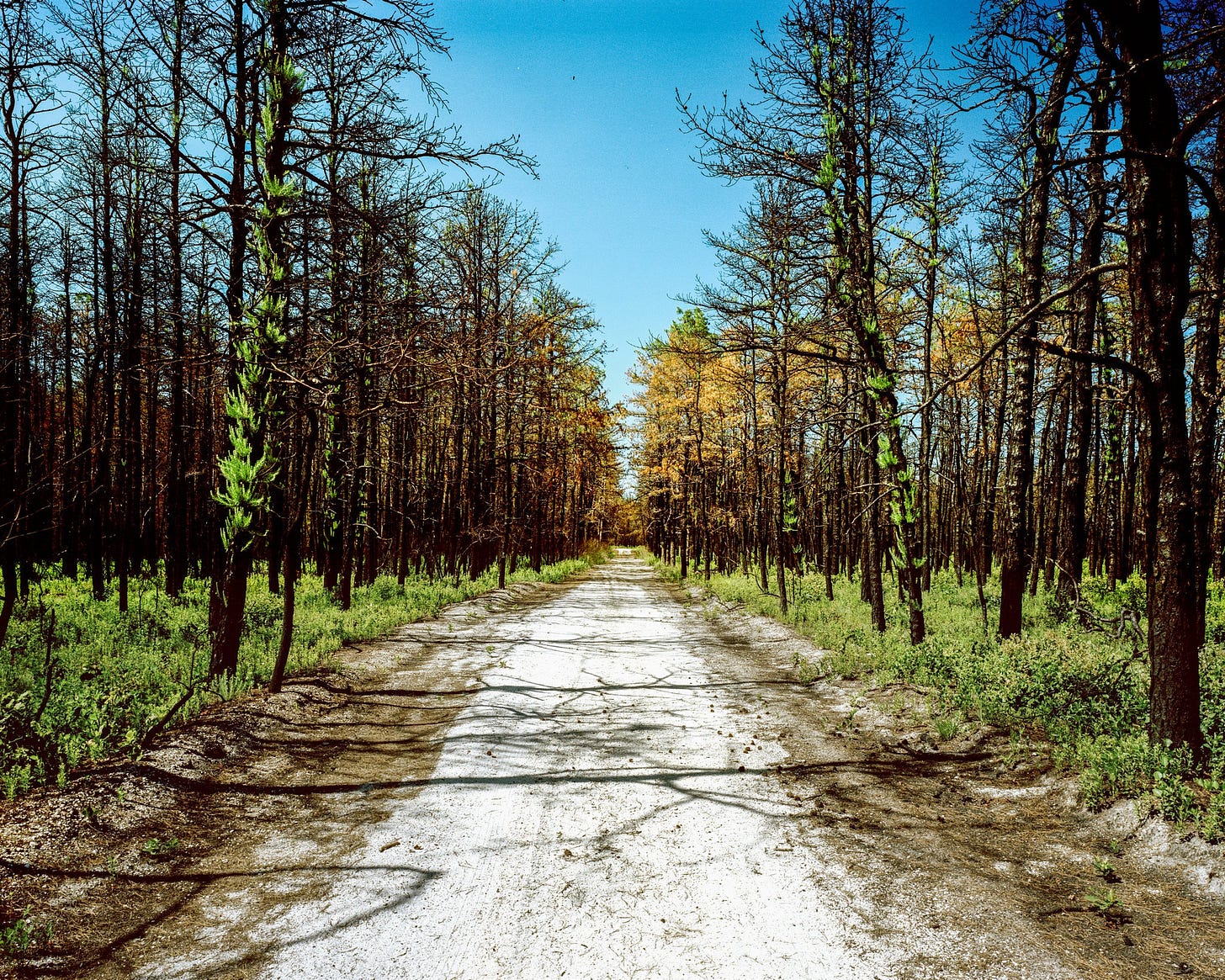I’ve been unable to write this newsletter, I confess. Watching the 2020 fire season unfold hasn’t been surprising, but confirming, in the worst way. I spent the entire winter of 2019/2020 reading about fire, interviewing people about fire, and nervously awaiting this season, knowing it was going to be a big one. I didn’t know it was going to be the biggest. I didn’t know its smoke would skulk the skies and lay itself down so thick we had to stay indoors in states where fires were barely burning. I didn’t know there would be red flag warnings far past when the season used to end. I didn’t know I would lose my words, the words I use to process everything, or that hopelessness would settle like wildfire smoke into my marrow and weigh me down so completely.
I am not the one that’s going to come up with a solution.
There isn’t one solution.
I’ve been sending myself article after article about wildfires, fire management, and the un precedented nature of the 2020 fire season, but I’ve stopped reading them. Their words are repetitive; they seem to exist in a weird echo chamber. We need to burn more. We need to plant more trees. We need mechanical thinning. Mechanical thinning is bad. The problem is forest management. The problem is fire suppression. The problem is climate change.
There is a wholehearted lack of nuance in many of these stories, and it’s not the fault of the writers (although let’s be real, sometimes it is a lack of education about the subject). The problem is the problem.
Our wildfire problem is so complex, we can barely begin to grasp how to approach it.
It’s going to seem like I’m going off topic, but we’ll come back. About eight years ago, when I started my life as a thirty-something undergrad, I worked as a literacy tutor in an underserved school in Syracuse, NY. The school was predominantly Black, and underfunded. The principal cared deeply about his students, and there were programs built into the foundation of the school- literacy programs, food programs (from Wegman’s, the best grocery store in the universe), and behavioral programs. But the teachers weren’t from within the communities, and many of them were burnt out. They didn’t always treat the children with the respect they deserved. The kids, even if all of their needs were met during the school day, returned to homes that were inundated with a diverse set of problems: generational poverty, the reverberations of slavery, the effects of institutionalized racism.
I started work at the school and my mind quickly hooked onto possible solutions for certain problems I’d see. One girl I tutored, a sweetheart who was often so tired she’d fall asleep partway through our lessons, told me that their roof had caved in and they were looking for housing. Another student would run out of medication because his mother sold it in order to pay their rent. After working at the school for a few hours, I was bused back to Syracuse University, an institution with a 1.35 billion dollar endowment, where I was surrounded by many students who had never experienced the kinds of hardships the kids I worked with were currently living through.
It was through this work that I began to understand something revelatory: the way we approach “problems” as a government and society is fundamentally flawed. I could see the web of problems the kids I worked with faced, and the unwillingness, both on a community and federal level, to work with complexity. Instead, the solutions were flat. I likened them to putting a band-aid over a gaping wound. The solutions were useless, because the problems had threads that were grounded in events that had happened hundreds of years ago. Without tracing our way back to that history, and untangling the series of knots our ancestors had unwittingly left us with, we’d never solve anything of substance.

(Photo Credit: Elias Williams)
This is how I see wildland fire. We messed up a long time ago, in a myriad of ways, and the solutions we sought only compounded our fuck-ups. There’s an unwillingness, on a federal level, to take a few steps back and begin untangling our problems. This is partially due to the glacial pace of policy-making, but it’s also a product of the inability for certain specialists from a wide-range of fields to come together and find some solutions.
The good thing? Solutions are happening on smaller levels. I’m thinking of the small Indigenous communities, particularly in Northern California and Southern Oregon, who have come together and are working with local county and state agencies to implement community burning. I’m thinking of the NFPA, who is doing strong work with smaller communities to help folks build more abundant fire-resistant housing.
Here’s the thing: we can’t count on our federal government to save us. That statement can be applied broadly, not just in fire. The flaw of having federal agencies as “land stewards” is a fundamental disconnection from our lands- an expectation that their management isn’t in our hands. It is. We need to get involved in our local communities, and educate ourselves. We need community burning and community building. It needs to start on micro levels. We can do it.
Thanks so much for reading, and please feel free to write me or respond to this email if you’d like resources or have something to say.
Warmly,
Stacy





Hi Stacy, I've been writing a little bit about last summer's fires in Australia and I was interested to see some common themes between Australia's and America's forest fires. It does sound a bit like Australia may be a little ahead of American in finding solutions, or at least in recognising the causes, at least in some areas. Anyway, I've going to share your newsletter as part of my recommended reading on the topic.